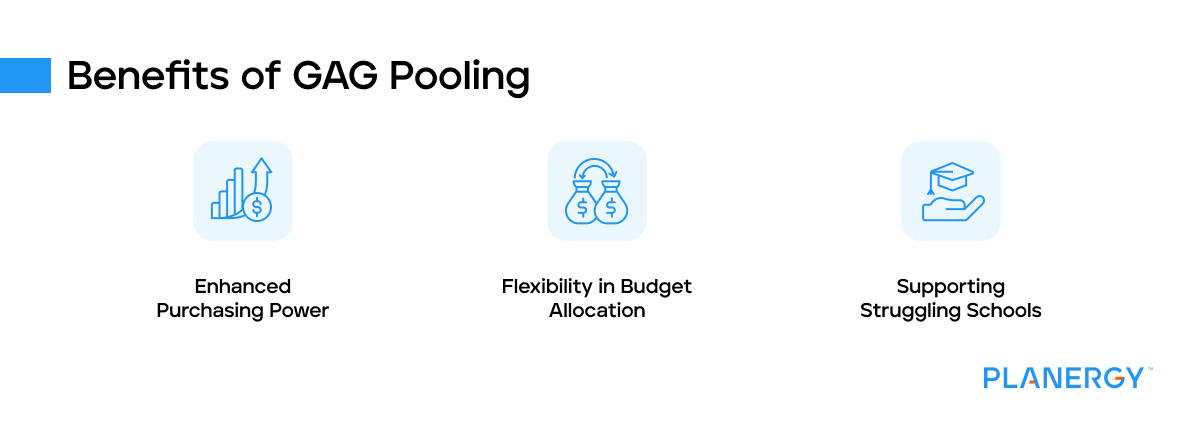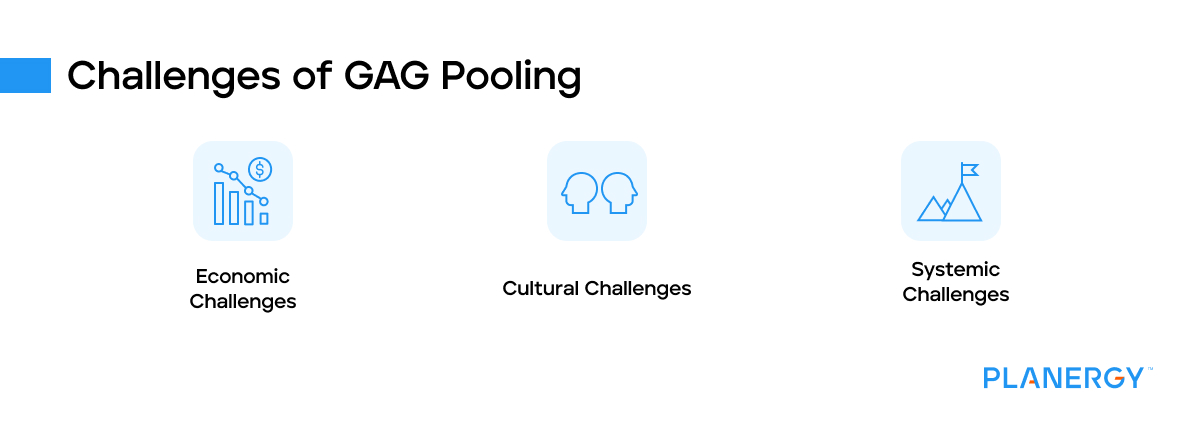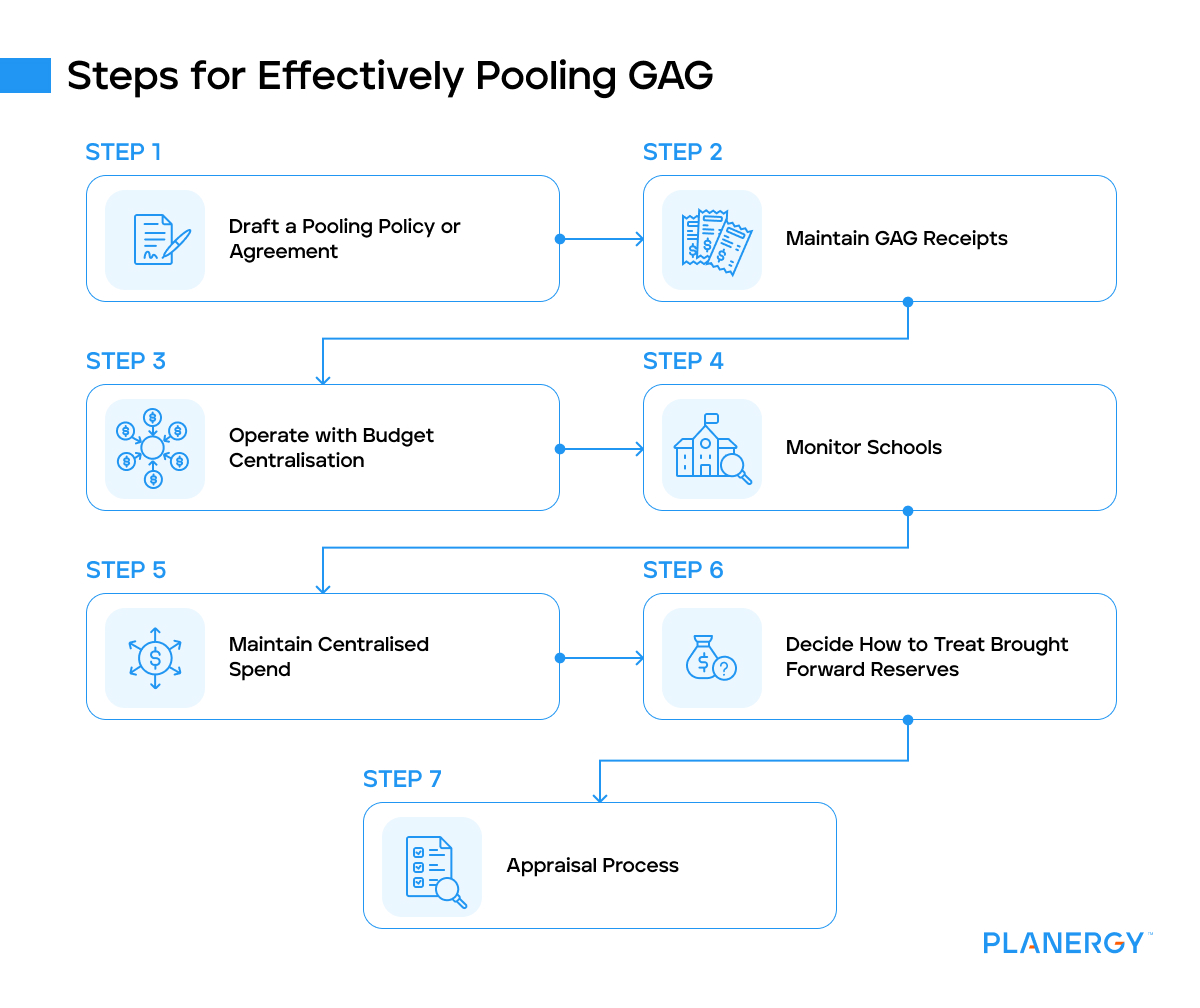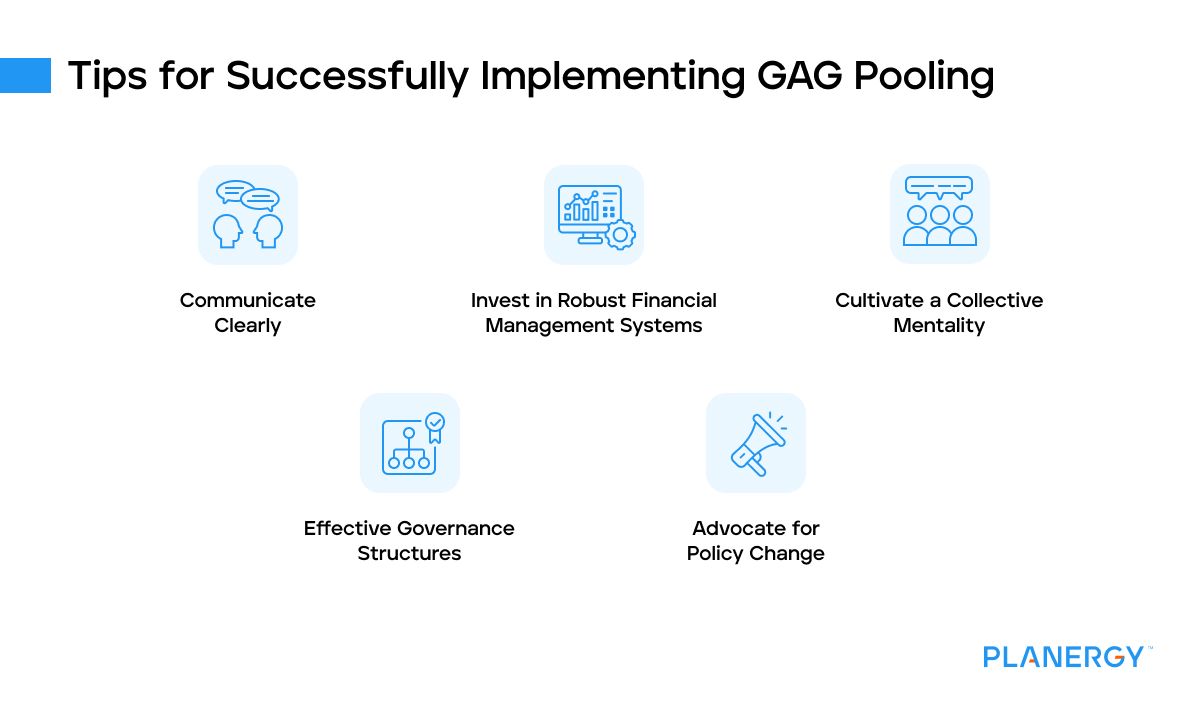GAG pooling, short for General Annual Grant pooling, is a principle in UK education funding where the funds allocated to each school within a Multi-Academy Trust (MAT) are combined.
Rather than each school managing its budget independently, all the funds are pooled and then distributed based on strategic decisions made by the MAT.
The GAG is a block grant from the Education and Skills Funding Agency (ESFA), calculated based on student numbers and needs. The grant covers running costs like salaries, utilities, and learning resources. As such, it’s a crucial lifeline that enables schools to operate effectively and provide quality education.
Not all Trusts limit themselves to pooling only the GAG income. Some also pool other ESFA or Local Authority income streams and self-generated, non-government income.
While the ESFA encourages GAG pooling, they have not provided detailed practical management guidance. There are no strict rules regarding which income streams should or shouldn’t be pooled.
As stated in the Academies Trust Handbook by the ESFA, the only exception is Private Finance Initiative (PFI) funding. According to the academy’s funding agreement, PFI funding should not be pooled.
What is GAG pooling?
GAG pooling is a strategic approach in financial management where the GAG funding of all schools within a MAT is combined into a single, central fund.
It deviates from the traditional model where each school manages its budget independently.
Instead, the MAT leadership redistributes the pooled funds across schools based on strategic priorities and individual school needs. This approach fosters collective responsibility, financial stability, and strategic resource allocation.
Why Use GAG Pooling?
The primary purpose of GAG pooling is to enable more strategic and flexible use of resources across a MAT.
It can enhance purchasing power as larger orders or contracts may attract discounts, allow for flexibility in budget allocation based on specific needs, and even help struggling schools through financial difficulties.
However, implementing GAG pooling comes with its challenges.
- Individual schools may resist due to fear of losing control over their budgets.
- New governance structures must be established to oversee and manage pooled resources, potentially adding complexity to the existing system.
- Managing a larger budget can also be difficult, requiring financial expertise and robust management systems.
Top Slice GAG
Top slicing is a practice where the Trust Central Management retains a portion of each school’s GAG funding for central services.
These services can include HR, IT support, and other shared services that benefit all schools within the trust.
Top slicing aims to reduce operational costs at individual schools by leveraging economies of scale. However, unlike GAG pooling, top slicing doesn’t involve the complete consolidation of budgets.
Top Slice vs. GAG Pooling
While both GAG pooling and top slicing are financial strategies employed by MATs, they differ significantly in how they handle funds.
In top slicing, only a portion of the GAG funding is taken by the Trust, leaving the rest for individual schools to manage. This model allows for some centralisation of resources but maintains a degree of financial autonomy at the school level.
On the other hand, GAG pooling involves fully consolidating all GAG funding into a single pool managed by the MAT. The MAT then allocates funds strategically across schools based on needs and strategic priorities.
This model promotes greater financial flexibility and strategic resource allocation but requires robust governance structures and clear communication to ensure fair and effective distribution of funds.
It’s up to school leaders in the MAT to build and develop the trust board, agreements, policies, etc. in a way that will benefit all members.
Benefits of Gag Pooling
Enhanced Purchasing Power
One of the primary benefits of GAG pooling is increased purchasing power, for better and faster procurement.
By consolidating funds they can also consolidate and centralize purchasing in certain areas of spend, MATs can negotiate better deals with suppliers and service providers, thus saving costs and maximizing resources.
For example, a MAT might negotiate a bulk purchase of IT equipment or learning resources across its schools, securing a significant discount that wouldn’t be accessible to individual schools.
Flexibility in Budget Allocation
GAG pooling allows for greater flexibility in budget allocation. Funds can be directed towards schools or projects that need them the most, ensuring resources are used strategically and effectively.
This flexibility can be particularly beneficial during times of unexpected financial strain, such as the need for sudden infrastructure repairs or investment in new teaching resources.
When exceptional costs arise during the year individual schools will no longer need to make very difficult decisions to find the needed funds, this can be absorbed by central funding.
Supporting Struggling Schools
GAG pooling provides a safety net for weaker schools facing financial difficulties. Instead of struggling schools trying to navigate financial challenges alone, resources can be allocated from the pooled funds to support them.
This collective responsibility fosters a supportive environment and ensures all constituent academies within the MAT can thrive.

Challenges of GAG Pooling
Economic Challenges
One of the primary economic challenges is the fear of losing financial autonomy. Schools may resist GAG pooling as they worry about losing control over their budgets. Losing autonomy is a key cultural challenge for any school joining a MAT.
This resistance can be particularly strong in financially healthy schools that might perceive GAG pooling as a risk to their stability.
Another economic challenge is the potential for financial mismanagement. Handling a large, consolidated budget requires powerful financial systems and expertise.
Without these, there’s a risk of misallocating funds, which could lead to financial instability within the MAT.
Cultural Challenges
Culturally, GAG pooling represents a significant shift from ‘my school’ to ‘our schools.’ It requires a collective mentality and trust among all stakeholders, which can be challenging to cultivate.
Individual schools may fear that their unique needs will be overlooked in favor of a one-size-fits-all approach. Headteachers may feel their autonomy being eroded.
Systemic Challenges
Systemically, implementing GAG pooling requires changes to governance structures. New decision-making processes must be established to manage the pooled resources, adding another layer of complexity to the existing system.
There may also be legal hurdles to overcome, as the current policies may not fully support the concept of GAG pooling.

Steps for Effectively Pooling GAG

Draft a Pooling Policy or Agreement
The first step is to draft a formal GAG pooling agreement or policy. This document should clearly outline how the pooled funds will be managed and allocated.
It should cover everything from the decision-making process to the procedures for handling any disputes. The agreement should be transparent, fair, and agreed upon by all schools within the MAT.
Maintain GAG Receipts
Keeping accurate records of GAG receipts is crucial for transparency and accountability.
Detailed records of the GAG funding received per school should be maintained, this is usually the responsibility of the Trust. These records can then be audited to ensure all funds are correctly pooled and distributed.
Operate with Budget Centralisation
Centralising the budget is a key aspect of GAG pooling. This involves consolidating all budgets within the MAT and having a central body – usually the MAT leadership or a designated committee – manage them.
The central body is responsible for allocating funds strategically across schools, ensuring resources are used effectively and efficiently.
Individual schools are not required to operate at cost neutral or surplus avoiding the need for budget deficits to be explained to the ESFA at school level as the Trust as a whole is not in deficit.
Monitor Schools
Regularly monitoring schools within the MAT is necessary to determine their financial needs and ensure funds are being used appropriately. It is also mandatory as part of the governance guidance for MATs.
This could involve regular financial audits, reviews of spending, and assessments of financial performance. Monitoring helps identify any issues early and allows for timely interventions if needed.
Maintain Centralised Spend
Maintaining a centralised spend involves managing certain expenditures at the central level rather than at individual schools.
This could include shared services like IT support or HR, or bulk purchases of resources. Centralising these expenses can lead to cost savings through economies of scale.
Decide How to Treat Brought Forward Reserves
Each school within a MAT may have its reserves brought forward from previous years. Deciding how to treat these reserves under GAG pooling is an important step.
Some MATs may pool these reserves, while others may allow schools to keep them. The decision should be clearly stated in the GAG pooling agreement.
Appraisal Process
Finally, implementing an appraisal process is crucial for evaluating the effectiveness of GAG pooling. This could involve regular reviews of financial performance, school feedback, and assessments of whether the GAG pooling meets its objectives.
The appraisal process helps identify areas for improvement and ensures the GAG pooling strategy remains effective and beneficial for all schools within the MAT.
Tips for Successfully Implementing GAG Pooling
To help address the challenges in the organisational process, there are several things you can do to mitigate everything.
Communicate Clearly
A key element of any successful change management plan is communication.
Clear and transparent communication is key to overcoming resistance towards GAG pooling.
Stakeholders, including headteachers and staff at all levels, should be informed about the process, its benefits, how funds will be allocated, and how it may affect them.
Regular updates and an open-door policy for questions can help build trust, alleviate fears about the loss of autonomy, and avoid employee pushback during the process of change.
It’s also important to communicate success stories and demonstrate the positive impact of GAG pooling on schools within the MAT.
Invest in Robust Financial Management Systems
GAG pooling requires robust financial management systems and expertise. MATs must invest in developing or upgrading their financial systems to handle the complexities of managing a large, consolidated budget.
This could involve hiring additional finance staff, training an existing finance team, or investing in financial management software.
With a strong system in place, MATs can ensure effective management of pooled resources, reducing the risk of misallocation and promoting financial stability.
Cultivate a Collective Mentality
Cultivating a collective mentality among the schools within a MAT is crucial for successfully implementing GAG pooling.
This involves fostering a sense of collective responsibility and unity. Workshops, team-building activities, and regular inter-school meetings can help achieve this.
The goal is to shift the mindset from ‘my school’ to ‘our schools,’ emphasizing that GAG pooling benefits the MAT as a whole.
Effective Governance Structures
Developing clear and effective governance structures is another critical step.
This involves setting up a decision-making process that is fair, transparent, and considers the unique needs of each school, as well as an appeals process to address any issues that may arise.
When everyone understands the appeals mechanism, individual academies can speak up about appealing decisions they don’t agree with.
A representative committee could be formed to oversee the management of pooled resources, with members from each school within the MAT.
This central team would make strategic decisions about fund allocation, ensuring all member schools have a voice.
Advocate for Policy Change
Advocacy for policy changes that support GAG pooling can help overcome legal and systemic hurdles. Lobbying relevant local authorities or working with education policy specialists can play a crucial role.
By advocating for supportive policies, MAT leadership teams can ensure a more conducive environment for GAG pooling, helping to streamline its implementation and maximize its benefits.

Is GAG Pooling the Way to Go?
GAG pooling requires careful financial planning, robust systems, and ongoing monitoring.
By following these steps, MATs can ensure effective and efficient GAG pooling, leading to strategic resource allocation and improved financial stability for every school within the organization.
A centralized spend management software, like Planergy, can help MATs in many ways.
Giving better visibility of spend across schools, accurate real-time spend versus budget reports, report on expenditure by fund, enforce internal controls for purchasing, automate accounts payable processing, and much more.




